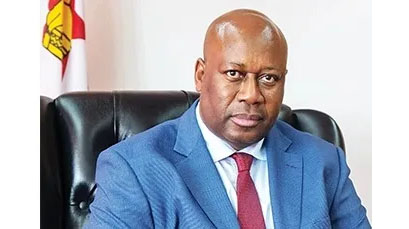The minerals of hope . . .US$12bn mining sector target to change nation’s fortunes

Herald Reporters
President Mnangagwa yesterday launched a strategic roadmap to the achievement of a US$12 billion mining industry by 2023 as Government ramps up efforts to increase the sector’s contribution to the economy.
Already, the mining sector is critical in generating foreign currency, contributing about 70 percent of the country’s forex earnings.
Speaking at the same occasion, Mines and Mining Development Minister Winston Chitando illustrated how meeting the US$12 billion mining industry target could change the country’s fortunes.
The projected increase represents a 344 percent jump from US$2,7 billion achieved in 2017.
A combination of picking low-hanging fruits or quick-win projects with a medium-term impact as well as a longer-term impact means Zimbabwe could see the lift soon.
Mining houses undertaking various projects towards the attainment of the target have been identified while negotiations with others are in progress.
Government expects that by 2030, the mining industry will be generating upwards of US$20 billion.
In his address, the President said the mining industry was key to Government’s goal of achieving an upper middle income economy by 2030.
“There is no doubt that, leveraging on the gains from our economic reforms, our engagement and re-engagement with the international community, the mining sector presents huge growth prospects towards the speedy attainment of our national vision to become an upper middle income economy by 2030,” he said.
President Mnangagwa explained that the mining sector had the potential to sustain other sectors of the economy if well exploited.
“Zimbabwe is endowed with vast natural resources and is host to more than 40 different minerals in the categories of precious metals, base metals, industrial metals and gemstones,” said President Mnangagwa.
“As Government we are convinced that the mining sector is a forerunner in the provision of backward and forward linkages with other economic sectors, creation of decent jobs, infrastructure development, export earnings and becoming the most preferred investment portfolio.
“Thus, the attainment of our Vision 2030 is premised on the mining sector making huge contributions. It is envisaged that investments and benefits accruing from this sector will be critical building blocks for a prosperous Zimbabwe.”

President Mnangagwa, Vice President Kembo Mohadi and Mines and Mining Development Minister Winston Chitando(left) toast at the launch of the strategic Road Map to the Achievement of US$12 Billion Mining Industry by 2023 at Harare International Conference Centre yesterday.-(Picture by Tawanda mudimu)
President Mnangagwa added that the strategic roadmap would facilitate the exploitation of minerals throughout the entire value chain.
“The objective of this strategic roadmap is to facilitate the exploitation processes of the country’s minerals throughout their entire value chain that is from exploration, mining metallurgical processing, value addition and beneficiation.
“My Government is desirous to transform the mining industry and ensure that the country achieves social equity and equality around communities where mining takes place. In this regard, the sector should enhance and adopt best practices, including occupational safety, health and environmental management in order to ensure appropriate healthy conditions of employees, local communities and the general public,” he said.
President Mnangagwa added that the strategic roadmap would create a conducive environment for both local and foreign investors.
“I am encouraged that as of now we have quite a number of projects, both greenfield and expansion projects, which are at various stages.
“We are enthused and encouraged that investors are having more confidence to invest in the country in response to the various reforms we are implementing,” he said.
The President also said there was need to have the requisite infrastructure that includes roads, rail, water and electricity, among others.
“I am delighted that the roadmap also highlights the contribution of the mining sector towards generation of energy. In the same vein, Government remains seized with the modernisation of our transport systems particularly the National Railways of Zimbabwe (NRZ) for it to offer the requisite logistical support to the mining sector.
“This is part of the broader national plans and vision to unleash the energies of our people to build a better future. I therefore, implore all stakeholders, both public and private to work with the unity of purpose always guided by broader national interest,” said President Mnangagwa.
He also warned that hurdles may be faced along the journey towards attaining the US$12 billion target, but collective effort, determination and commitment, will see the “Zimbabwe we all want” being built.
Under the US$12 billion mining roadmap, gold is expected to contribute US$4 billion, platinum US$3 billion while chrome, iron, steel diamonds and coal will contribute US$1 billion.
Lithium is expected to contribute US$500 million while other minerals will contribute US$1,5 billion.
Minister Chitando said Government was committed to attainment of the US$12 billion target and “considerable progress has been made towards its achievement”.
Minister Chitando added: “A Mineral Development Policy to be unveiled soon will include; US$12 billion industry by 2023 and over US$20 by 2030, coal to generate electricity enough for local use by 2023 as well as for exports and generation of sufficient fuel by the year 2030.”
The target does not factor in downstream industries.
Key deliverables of the sector include enhanced exploration, enhanced investment and capacity building, increased productivity and employment creation, greater value addition, increased exports and foreign currency generation and ensuring optimum benefits to the country and the people.










Comments